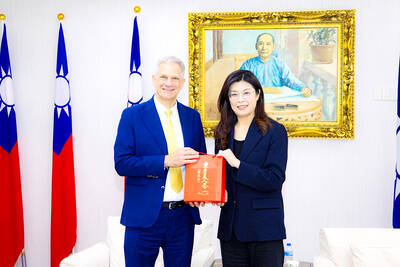Benjamin Chen (陳昱安) didn’t know how intense a hackathon could be.
“You literally work non-stop. You don’t eat breakfast, you don’t eat lunch because you really need to finish the product,” the 10th-grader from Taipei American School says. “You feel the adrenaline rushing… It’s refreshing, I was like a new person.”
Chen became fascinated by these round-the-clock competitions to create technology or software products, and participated in 10 more before he decided to start one that focused on his twin passions of economics and technology. He says there are many hackathons that delve into social and environmental issues, but few have economics as the main theme, not to mention student-led and focused ones.

Photo courtesy of Benjamin Chen
He fondly recalls his first hackathon, where he and two teammates designed a phone app that allows people to earn virtual currency within the game by walking, encouraging them to reduce their carbon footprint.
He called up a friend who has organized several hackathons, and recruited an international team. Thousands of calls and e-mails to various institutions and companies later, and they had enough sponsors and guest speakers to make it a reality. Chen expects about 500 people to participate in the event, dubbed EconHacks, which will take place over 24 hours starting at noon on Feb. 13. Speakers will be presenting throughout the day on topics ranging from economic policy, financing a startup and virtual reality app-building. Participation is virtual and free to all 8th to 12th graders.
“The most important thing was getting the sponsors because people won’t join if you don’t have good prizes,” Chen says. Worth over NT$6.4 million, the prizes include cash rewards, various course and program subscriptions, promo codes as well as internship, exposure and funding opportunities through well-known tech-companies.
Though the specific theme will be announced during the opening ceremony, the core idea is to improve an aspect of the financial sector or help solve a current economic problem, especially anything related to COVID-19. The hackers will then form groups of one to four and begin work on a prototype.
“They’re going to be working the whole time, they’re not going to sleep and at the end they’re going to pitch their idea within a three-minute video,” Chen says.
Chen says his interest in economics was inspired by his father, who works in finance.
“Basically every conversation I have with my dad is about finance or economics, so from a very young age he expected me to do a finance job. But it’s not because he forced me or anything, I just find it very interesting and rewarding.”
Chen says the pitiful financial literacy of millennials also highlights the need to educate more young people on economics and especially how it relates to technology.
As more operations and ventures are moving online due to COVID-19, it’s important to understand this economic shift. Chen says that he hopes EconHacks will give young people more opportunities to think about such issues while rewarding the ones who are already passionate about them.

Seven hundred job applications. One interview. Marco Mascaro arrived in Taiwan last year with a PhD in engineering physics and years of experience at a European research center. He thought his Gold Card would guarantee him a foothold in Taiwan’s job market. “It’s marketed as if Taiwan really needs you,” the 33-year-old Italian says. “The reality is that companies here don’t really need us.” The Employment Gold Card was designed to fix Taiwan’s labor shortage by offering foreign professionals a combined resident visa and open work permit valid for three years. But for many, like Mascaro, the welcome mat ends at the door. A

Last week gave us the droll little comedy of People’s Republic of China’s (PRC) consul general in Osaka posting a threat on X in response to Japanese Prime Minister Sanae Takaichi saying to the Diet that a Chinese attack on Taiwan may be an “existential threat” to Japan. That would allow Japanese Self Defence Forces to respond militarily. The PRC representative then said that if a “filthy neck sticks itself in uninvited, we will cut it off without a moment’s hesitation. Are you prepared for that?” This was widely, and probably deliberately, construed as a threat to behead Takaichi, though it

If China attacks, will Taiwanese be willing to fight? Analysts of certain types obsess over questions like this, especially military analysts and those with an ax to grind as to whether Taiwan is worth defending, or should be cut loose to appease Beijing. Fellow columnist Michael Turton in “Notes from Central Taiwan: Willing to fight for the homeland” (Nov. 6, page 12) provides a superb analysis of this topic, how it is used and manipulated to political ends and what the underlying data shows. The problem is that most analysis is centered around polling data, which as Turton observes, “many of these

Since Cheng Li-wun (鄭麗文) was elected Chinese Nationalist Party (KMT) chair on Oct. 18, she has become a polarizing figure. Her supporters see her as a firebrand critic of the ruling Democratic Progressive Party (DPP), while others, including some in her own party, have charged that she is Chinese President Xi Jinping’s (習近平) preferred candidate and that her election was possibly supported by the Chinese Communist Party’s (CPP) unit for political warfare and international influence, the “united front.” Indeed, Xi quickly congratulated Cheng upon her election. The 55-year-old former lawmaker and ex-talk show host, who was sworn in on Nov.